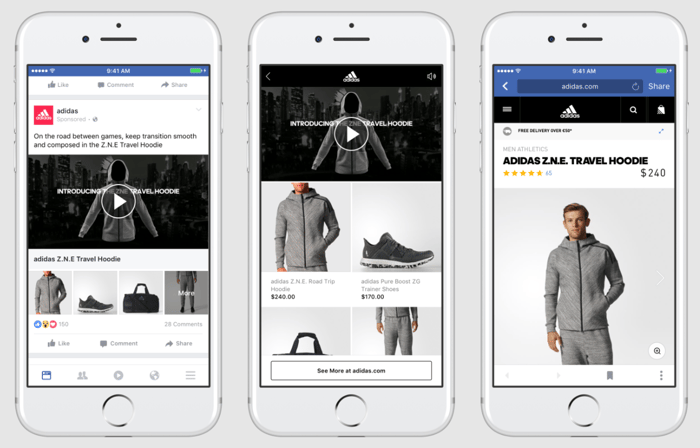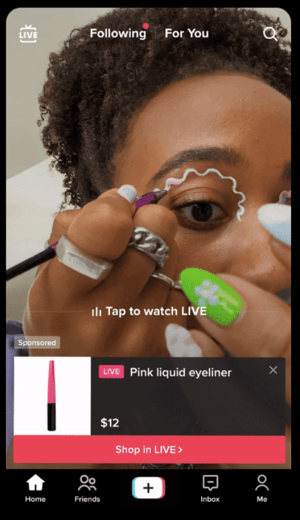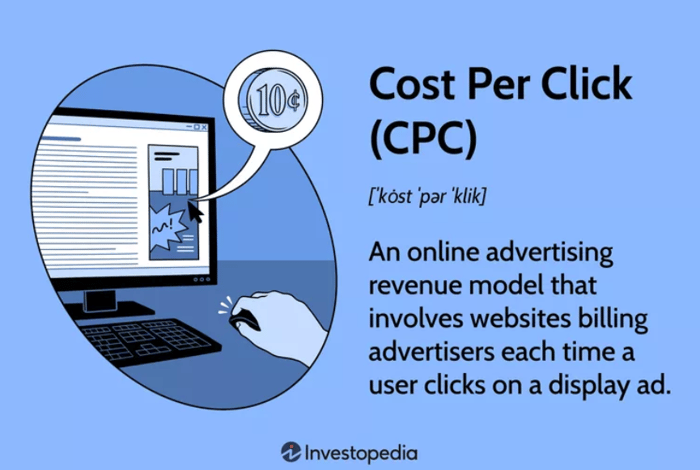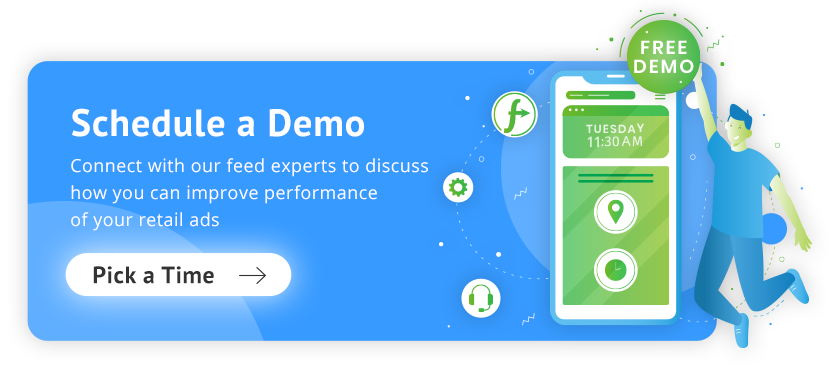The battle for attention and engagement between eCommerce channels has intensified these days, especially within the realm of social media advertising.
Retail businesses aiming to captivate audiences and drive conversions are wondering which channel: TikTok or Facebook ads will be more effective for them. Both platforms offer distinct advantages and cater to diverse demographics.
Find out if you should choose Facebook or TikTok... or maybe you shouldn't choose at all!?
- Understanding the fundamental differences between TikTok ads and Facebook/Meta ads is essential for advertisers to develop effective marketing strategies for each platform.
- Choosing between TikTok and Facebook for eCommerce advertising depends on specific objectives, target audience, creative capabilities, and budget considerations..
- Both TikTok and Facebook can be used together in a multi-channel strategy to reach more people and achieve marketing goals, with each platform serving different purposes at various stages of the marketing process.
Benefits of Facebook Ads
When it comes to leveraging Facebook ads for your eCommerce business, there are several key advantages to consider.
Huge user base
The platform offers a large user base of nearly 3 billion monthly active users, allowing your business to connect with a wide pool of potential customers. This expansive reach is further amplified by Meta's ownership of Instagram, providing seamless cross-advertising access to an additional 2 billion MAU platform.
Advanced targeting
The detailed targeting capabilities of Facebook's advertising algorithm enable you to precisely reach your desired market.
Facebook's user base spans diverse generations and demographics, offering unparalleled potential for targeting specific audiences. The platform's advanced targeting options enable precise audience segmentation based on various criteria such as age, interests, location, and behaviors.
Targeting via the Meta Pixel is one of the most critical components of successful advertising for ecommerce businesses. It allows for precise targeting based on specific actions that users take on a website, such as adding items to cart, making purchases, or visiting specific product pages.
Targeting users who have visited specific product pages enables you to showcase tailored ads for those products, increasing the relevance and likelihood of conversion.
Also, creating lookalike audiences based on the data collected by the Meta Pixel is a powerful strategy. These lookalike audiences consist of people who share similar characteristics and behaviors to those who have already performed the desired actions on the website (e.g., made purchases or added items to cart).
Built-in A/B testing features within the Meta Ads Manager
These fatutes empower you to gain real-world insights into what resonates with your audience. Furthermore, the platform's tracking and analytics tools are renowned for their power and reliability, offering businesses valuable data-backed insights to inform their strategies.
Good ROI
The proven return on investment (ROI) that many eCommerce businesses have achieved make it a favored choice among advertisers.

Drawbacks of Facebook Ads
When considering the drawbacks of using Facebook ads, it's important to note that there are several factors that can make it a challenging platform for marketers.
The initial learning curve and setup process
Facebook Ads can be quite time-consuming and demand a significant amount of manual work, which may pose a hurdle for new advertisers.
Some marketing agencies tend to prefer platforms with more user-friendly advertising interfaces and different audience demographics.
High costs
The increasing costs associated with Facebook ads have become a concern for businesses, mirroring the platform's rise in popularity. This trend has led to a boutique-like exclusivity, potentially presenting challenges for smaller businesses operating within limited budgets.
Ad fatigue
The prevalence of ads on Facebook has resulted in ad fatigue among users, leading to decreased responsiveness to marketing messages.
Complicated ad policies
Facebook's complex ad policies and stringent rules pose a challenge for advertisers, as non-compliance can result in ad rejections or even account bans.
Privacy concerns
Privacy concerns and changes in ad targeting options have added another layer of complexity, potentially limiting the ease of reaching specific audiences compared to before.
Benefits of TikTok Ads
When considering the advantages of utilizing TikTok for advertising, it's evident that the platform offers a range of compelling benefits.
Unique audience
TikTok presents an opportunity to reach an audience that is often overlooked by other platforms such as Facebook and Instagram. This untapped audience, particularly prevalent in regions where traditional social media giants have less influence, represents a valuable opportunity for advertisers to expand their reach.
Great to reach younger audience
TikTok boasts a predominantly youthful user base, making it an ideal platform for businesses targeting Gen Z and Millennials. The engaging and creative nature of TikTok's short video format allows businesses to craft compelling ad content that resonates with this energetic audience, fostering a fun and effective advertising environment.
Lower costs than on Facebook
In terms of cost-effectiveness, TikTok often provides budget-friendly CPM and CPC rates, offering advertisers the opportunity to reach a substantial audience at a reasonable cost.
Influencer marketing
Lastly, similar to Instagram, TikTok facilitates influencer marketing, enabling businesses to collaborate with creators and leverage their influence to produce captivating content that aligns with the brand's values and style.

Drawbacks of TikTok Ads
When considering TikTok ads, it's essential to recognize both the opportunities and limitations that the platform presents.
Limited guides and info
Due to TikTok’s status as a relatively new platform, there is a lack of comprehensive guides and information available online, which can hinder advertisers when getting started or seeking assistance.
The variety of TikTok ad formats
TikTok's ad formats are somewhat limited compared to other platforms like Facebook, offering fewer options for advertisers to diversify their content. With the time TikTok is adding more types of ads, check our guide on recently added tiktok search ads.
Basic analytics
Moreover, the platform's analytics tools are still in the early stages, providing less robust insights compared to more established platforms.
Not for all types of audiences
The user base on TikTok skews heavily towards a younger demographic, potentially limiting its effectiveness for businesses targeting an older audience.
Minimum budget requirements
While TikTok ads can be cost-effective, certain programs or features may have high minimum budget requirements, which could be a barrier for some businesses.
|
Features |
|
TikTok |
|---|---|---|
|
User base |
Nearly 3 billion monthly active users + seamless access to Instagram's users |
Predominantly youthful user base: Gen Z and Millennials |
|
Targeting |
Detailed targeting algorithm, precise audience segmentation. Available targeting via Meta Pixel for specific actions |
Less advanced targeting |
|
Costs |
Increasing costs associated with Facebook ads - might be a challenge for smaller businesses with limited budgets. |
Cost-effective CPM and CPC rates for reaching a substantial audience |
|
Setup process |
Time-consuming setup process. Manual work may pose a hurdle for new advertisers |
Lack of comprehensive guides and information available online |
|
Additional bonuses |
Built-in A/B testing features and proven good ROI |
Great for creative content and influencer marketing |
TikTok vs Facebook: Differences in 6 key metrics
When comparing Facebook ads to TikTok ads, there are several key differences. These two platforms differ in ad format, targeting options and ad costs, including CPM, CPC, CTR and ACR.
Ad format
Both Facebook and TikTok offer different kinds of ad formats to help businesses reach different audience segments based on different business objectives.
For example, on Facebook, you can use photo ads to show off your products, video ads to tell a story, carousel ads to display multiple products, and collection ads to create a seamless shopping experience.
TikTok
On the other hand, TikTok offers ad formats like Native ads, Branded content, TopView ads, and "Spark ads," which resemble Facebook's "Engagement ads." These ad types aim to prompt user interaction through actions like swiping up or commenting. Additionally, TikTok offers campaigns optimized for purchases with the "Complete Payment" campaign type, enabling businesses to drive conversions by incorporating a "Shop Now" button in their ads. This approach proves beneficial for eCommerce merchants seeking to boost sales.
Given the broad spectrum of ad formats available on both platforms, it's crucial to align your choice with your business goals and target audience. By selecting the most suitable ad format, you can effectively engage your desired audience and drive meaningful conversions.
Targeting
Both Facebook and TikTok provide a variety of targeting options that help businesses connect with the people they want to reach.
Facebook offers more advanced targeting options and a wider range of audience data and analytics, making it a preferred choice when comparing targeting in TikTok ads vs. Facebook ads.
Facebook stands out with its highly advanced targeting capabilities, allowing businesses to target users based on demographics, location, interests, behaviors, and connections. Moreover, businesses can create Custom Audiences using customer data and retargeting options, as well as utilize Lookalike Audiences to target users similar to their existing customers.
TikTok
While TikTok's targeting options are not as advanced as Facebook's, businesses can still target users based on demographics, location, interests, and device type. Additionally, they can create Custom Audiences and use retargeting options, along with Interest Targeting to reach users based on their interests.
Ad cost
When it comes to advertising on Facebook and TikTok, the costs can differ significantly.
Cost Per Mille (CPM)
CPM refers to the cost incurred for 1,000 ad impressions by the channel.
On Facebook, businesses have the flexibility to set their own budget for ad campaigns, and the costs can fluctuate based on targeting options, ad format, and ad placement. The average cost per thousand impressions (CPM) on Facebook is around $6.97.
TikTok
At its launch in 2019, TikTok ads were cheap, with a CPM of $1, but this figure has since risen to an average of $3.21, varying based on the ad format. For example, the average cost per mille for TikTok Spark ads is 4% lower than other ad formats.

Source: Investopedia
Cost Per Click (CPC)
The average cost per click (CPC) on Facebook is approximately $1.84
TikTok
The typical cost per click for TikTok ads is $1.63, depending on the ad format used. It's worth emphasizing that despite TikTok's lower advertising costs, it's essential to consider that the platform has a smaller user base.
Click-through rate (CTR)
On average, Facebook boasts a higher link click-through rate (CTR) of 1.07% in comparison to TikTok's average of approximately 0.84%. This indicates that users are more inclined to click on a link within a Facebook ad than a TikTok ad.
The extensive history and user familiarity associated with Facebook establish a robust foundation for trust and active engagement with ads on the platform. Furthermore, achieving a high CTR on Facebook is relatively feasible through ad copy optimization, with the potential to surpass a CTR of 2%.
TikTok
In contrast, TikTok tends to retain more of its audience within the platform, which can be advantageous for businesses aiming to enhance engagement and raise brand awareness. The platform's emphasis on video content also leads to increased user engagement with ads for a longer time.
Average Conversion Rate (ACR)
TikTok
There isn't much reliable data on ACR for TikTok ads, but it's reasonable to expect an ACR of between 1.5% and 3%.
On the other hand, ACR for Facebook ads varies considerably, ranging from 2% to 15%, with eCommerce ads averaging around 4%.
|
Metric |
|
TikTok |
|---|---|---|
|
Ad formats |
Photo, Video, Carousel, Collection |
Native, Branded content, TopView, Spark |
|
Targeting Options |
Advanced targeting based on demographics, location, interests, behaviors, connections, Custom Audiences, Lookalike Audiences |
Targeting based on demographics, location, interests, device type, Custom Audiences, Interest Targeting. |
|
CPM (Cost Per Mille) |
Average of around $6.97 |
Average of around $3.21, varying based on ad format |
|
CPC (Cost Per Click) |
Approximately $1.84 |
Approximately $1.63, varies by ad format |
|
CTR (Click-Through Rate) |
Average of 1.07% |
Average of approximately 0.84% |
|
Average Conversion Rate (ACR) |
Varies from 2% to 15% |
Expected range of 1.5% to 3% |
TikTok vs Facebook: Which is better for eCommerce?
When it comes to deciding between TikTok and Facebook for eCommerce advertising, there are several factors to consider. While TikTok excels in generating impressive impressions and offering potentially lower costs for advertisers, Facebook demonstrates higher click-through rates (CTRs) and conversion rates, indicating its effectiveness in driving sales.
Facebook's ad platform allows ads to be served across multiple environments within the app, providing a versatile advertising space. On the other hand, TikTok relies on captivating video content for increased CTR, making it an attractive option for businesses adept at crafting engaging visual narratives.

Ultimately, the choice between TikTok and Facebook for eCommerce advertising boils down to the specific objectives and target audience of the business, as well as its creative capabilities and budget considerations.
It's not possible to say which ad platform is "better" between Meta and TikTok because both can be used together to achieve different goals across the entire customer journey.
Why choose at all? Go for the multi-channel strategy!
Using both Facebook ads and TikTok ads together can help brands reach more people and achieve their marketing goals.
TikTok is great for making fun videos to get people interested in a brand, while Facebook is good for targeting specific groups and getting people to take action. Both platforms can be useful at different stages of the marketing process.
For example, Facebook usually performs better for getting people to buy something, while TikTok is good for building a loyal community of customers. By using both platforms, brands can create a complete marketing strategy that makes the most of what each platform does best.
Another aspect is the audience. TikTok Ads are effective for reaching a younger audience and promoting eCommerce products due to their ability to engage users. On the other hand, Facebook Ads are well-suited for an older demographic and tend to perform better for higher-priced products.

Source: LinkedIn
The optimal approach is to maximize performance across all channels by leveraging their respective strengths. Now, let's explore how to achieve this.
1. Understand your audience
Understand your target audience's needs and preferred social media platforms. Determine who finds your product appealing.
2. Research popular platforms
Research the popular eCommerce and social media platforms to understand their user demographics, features, and advertising options. Consider platforms like TikTok, Facebook, Instagram and others: Amazon, eBay, Pinterest, and more.
Evaluate the features and capabilities of each platform. Consider factors such as ease of use, customization options, payment processing, shipping integration, and marketing tools.
3. Assess competitor presence
Look into where your competitors are present. Analyze their activity and engagement on different platforms to gauge their effectiveness and identify potential opportunities.
4. Consider your product type
Consider the type of products you sell. Some platforms may be better suited for specific product categories. For example, visual products may perform well on visually-focused platforms like Instagram and Pinterest.
5. Consider your budget and resources
Assess your budget and resources available for managing multiple channels. Some platforms may require more investment in terms of time, money, and personnel.
6. Look for the options to integrate multiple channels
Evaluate the possibility of integrating multiple channels. For instance, you might want to sync your eCommerce website with social media platforms for seamless product promotion and selling.
7. Utilize multichannel marketing tools
Implement a multichannel marketing tool that can help you manage and optimize your product listings across different platforms, ensuring consistent messaging and a streamlined customer experience.
8. Start advertising and selling!Start selling on both Facebook and TikTok using a multichannel eCommerce platform
To get started advertising on both Facebook and TikTok, a multi-channel ecommerce platform offering feed management is effective. This kind of solution facilitates seamless integration with both social media platforms, allowing you to efficiently create, manage and optimize product listings tailored to the unique audience and engagement dynamics of each platform.
Robust features enable synchronized management of product feeds, ensuring consistent representation of offers on both Facebook and TikTok, ultimately promoting a cohesive brand presence and maximizing reach across multiple channels simultaneously.
Through centralized analytics and reporting, it becomes possible to gain comprehensive insights into campaign performance across both channels, allowing for informed decision-making and iterative improvements.
Conclusion
The debate between TikTok and Facebook ads for retail businesses is a compelling one. As we've explored the unique attributes and potential of each platform, it's clear that both TikTok and Facebook offer distinct advantages that can significantly impact the success of retail marketing campaigns.
Ultimately, the choice between TikTok and Facebook ads hinges on understanding your target audience, aligning with your brand's overarching goals, and leveraging the specific strengths of each platform to maximize reach and engagement.
And the best solution? Use both TikTok and Facebook at the same time!
We encourage you to share your thoughts and experiences with TikTok and Facebook ads for retail in the comments below.

